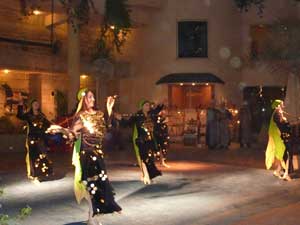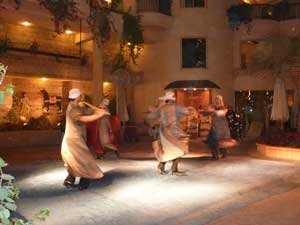Karnak, The Temple of Amun.

Anyone contemplating a mystical journey to Egypt might enjoy reading these pages. My own travels began back in 2002, when I first visited Egypt. Since then I have been there many times, finding myself constantly drawn back to this ancient land of magic and temples. My research on gods and goddesses first took me to Luxor, where I explored the temples and shrines built in their honour.
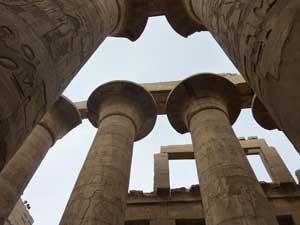
My mystical journey began in Karnak, where the ancients once worshipped Amun, his consort Mut and their son Khonsu. My intention was to rediscover the Opet Festival and follow the processional way from Karnak to Luxor Temple. The Opet Festival took place in the Inundation Season, the Akhet, when the Nile flooded the fields and the world seemed to return to its deluvian origins. The celebrations lasted a whole month, as people worshipped Amun and the rising floodwaters which would bring a renewal of life. During this festive time people participated in communal dances, musical and theatrical performances.

The people enjoyed this time of revelry, feasting and drinking to excess, believing this brought them closer to the gods. The Festival began in Karnak where the effigies were carried through the temple and then sailed along the Nile in the sacred barques. Karnak was called Ipet-Isut, “the Most Selected of Places,” and Opet means “Secret Chamber,” where the arcane rites were performed.
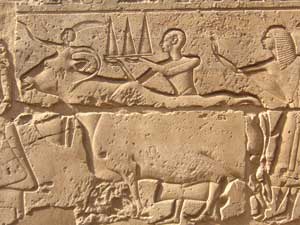
In order to identify with the priests and priestesses I needed to get inside their minds, to feel what it was like to worship the gods 4000 years ago. I wore a white dress and brought a bag of sweets, incense and water for the offerings. This is not as strange as it sounds, as many people come to the temples to worship, and it is not unusual to see small groups wandering around in white robes. The locals are quite accustomed to it, as they have witnessed such acts of veneration for thousands of years. Putting aside my inhibitions, I took off my sandals and slipped them into my bag. I washed my hands and feet from my water bottle and prepared to meet the gods. Passing the massive statues of Rameses II, I walked along the processional way to the three chambers where the sacred barques were once stored.
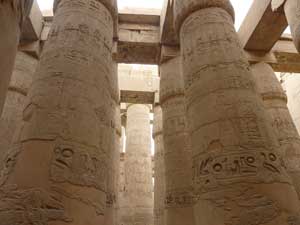
I immediately felt the magic of the place and thought about the priests who once worshipped Amun 5 times day, observing secret rituals that only the adepts could witness. I found a quiet spot in the Precinct of Amun, gazing up at the enormous columns of the Hypostyle and felt the energy enter my body. There are 134 columns, some 22 metres high and 3 metres wide, I began to realise the stones were a symbol of eternity; the massive columns rising out of the primeval flood, reminding us of the eternal realm above the capitals. Something mysterious happens in this place: the sheer size of the columns has a powerful effect on the psyche and if you sit and mediate for a while it is possible to enter another dimension. I began to imagine the priests circling the columns in prayer, chanting in unison as they followed the High Priest round the Hypostyle, awakening the gods.
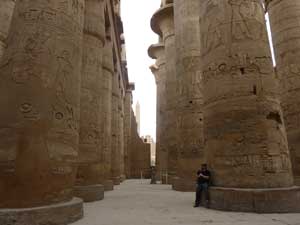
I wandered into the Precinct of Mut, where I came across several temples and a sacred lake where the priestesses used to perform their votive ablutions. Mut was worshipped as a mother-goddess, queen of the gods and wife of Amun. She was honoured at the Festival of Mut, when her holy effigy was sailed around the lake as worshippers threw flower petals on the surface, dancing and singing with joy. Mut is portrayed as a vulture with great wings, as the vulture is a symbol of motherhood; the ancient word for mother being mwt. The oldest temple was built by Queen Hatshepsut, and I could see why this female pharaoh would identify with this powerful goddess, reinstating the divine feminine within the hierarchy of the gods.
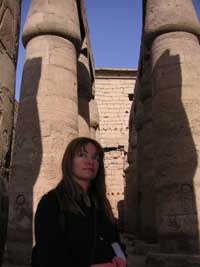
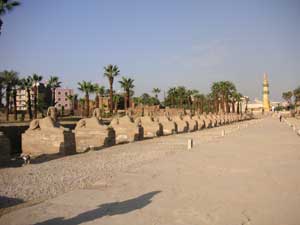
I sat by the sacred lake and imagined the priestesses disrobing and swimming in the healing waters. The crescent shaped pool is a way of honouring her son Khonsu, a moon-god. I poured some water on my feet and imagined immersing myself in the lake, my pores absorbing the divine energy, my eyes able to see the invisible. I felt compelled to worship the goddesses as the priestesses once did. I lit the incense sticks and laid them by Mut’s image, reciting some prayers as the priestesses would have done, leaving a small pyramid of sweets by the statue, knowing the guards would help themselves later—but that didn’t matter—once the offering had been made it could be eaten by mere mortals.
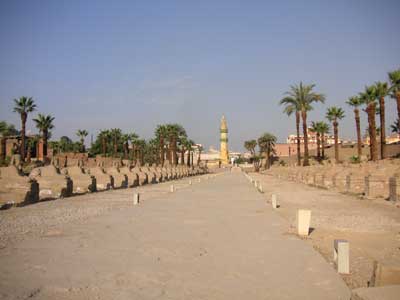
An early account of the festival describes how Amun was taken to Luxor Temple to unite with his wife, symbolising the renewal of life. His statue was transported in his gold barque to Luxor Temple, the priests carrying the boat along the Avenue of Sphinxes, the sweat dripping down their faces, the revelers dancing and playing music, the acrobats, jugglers and fire-eaters trailing behind. The barque was taken through the village so everyone could see the statue of Amun and ask the Oracle their pertinent questions, “Will I conceive a child this year?” “Will I grow fertile crops this season, enough to make me rich?” The helm would move forward for yes, and backwards for no.
In the New Kingdom, Amun, Mut and Khonsu were sailed to Luxor Temple in their individual barques, and the worshippers came to the river’s edge where they made offerings to the gods and threw gifts into the Nile.

I walked along the Avenue of Sphinxes, passing the thousands of lionesque statues, symbols of divine royalty. The procession would then enter Luxor Temple and head towards an intimate chamber where Amun and Mut would indulge in a renewal of their marriage vows, thus reaffirming the fertility and stability of Egypt. Inside the secret chamber Amun and Mut would also indulge in carnal bliss, blessing the earth with their sexual energy. It was also a time for the Pharaoh to renew his leadership and power; his divine right to rule strengthened by the gods. Then the Pharaoh would walk amongst his people, his sovereignty endorsed by gods and mortals alike.
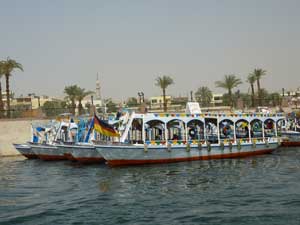
It is interesting to note that a similar festival still exists in Luxor, called the Moulid of Abu el Haggag. Abu el Haggag was a 12th century sheikh revered for his good deeds and healing powers, and his mosque near Luxor Temple is one of the oldest in the city.
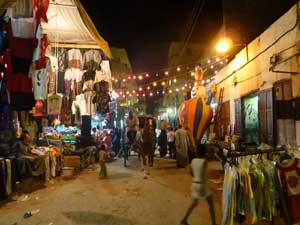
The Moulid takes place 2 weeks before Ramadan, 2 days of music, dancing, colourful parades and great feasts; the camels, horses and people alike all dressed in colourful costumes. Boats are decorated and carried through town, just like in ancient times; it is a celebration of life and joy, with young and old dancing to the deafening music, participating in the festivities and enjoying picnics by the river, just as they did 4000 years ago, the festival is a time to honour both the spiritual and physical world.
